Puning Temple
Puning Temple
Puning Temple is located in Chengde City, Hebei Province. It was built in the Qianlong period of the Qing Dynasty. The first half of the temple is Han-style, with the characteristics of traditional Buddhist temples of the Han nationality; the second half is Tibetan-style, built in imitation of the Sang Yi Temple in Tibet, and the two different styles of architecture are integrated. The whole monastery is magnificent and covers an area of about 23,000 square meters. The main Buddha statue of Puning Temple is Thousand-Handed Thousand-Eye Guanyin Bodhisattva, 27.21 meters high. It is a golden lacquer wood carving Thousand-Handed Thousand-Eye Guanyin Bodhisattva. The current presiding officer is Guru Morigan Tu Kumgang .
On December 29, 2018, it was named the Sixth Batch of demonstration zones (units) for national unity and progress by the National People's Committee.
Historical Evolution
Puning Temple was built in the 20th year of Emperor Qianlong of Qing Dynasty (1755). The army of the Qing Dynasty calmed down the rebellion of Gutaijidawazi in Junggar. In October of winter, four parts of Erut Mongolia came to visit Emperor Qianlong at the Summer Villa. In order to commemorate the federation, Qianlong imitated the precedent of Kangxi and Kalkha Mongolian Federation in establishing the Huizong Temple in Dorun. The Qing government built the Lama Temple in the form of Sanmoye Temple in Tibet.
In May 1760, the Qing government sent Bandi as a general to fight against the Dawazi rebellion, the reactionary leader of the Junggar Ministry in Erut Mongolia. The Qing army went directly to Yili, Xinjiang, and Dawazi escaped to the south of Tianshan Mountains. He was captured by Huo Jisi, the Uygur leader, and released into the Qing barracks. Amur Thana, another reactionary leader of the Junggar Ministry, continued to rebel after Hodges captured Dawazi and colluded with external forces such as Tsarist Russia. When attacked by the powerful Qing army, Amur Thana soldiers fled to Russia. Two rebel armies were wiped out. In order to commemorate the victory of the two rebellions, Qianlong held banquets and titles for the four upper nobles of Erut (Junggar, Dulbert, Glory and Masterpieces) at Chengde Summer Resort. Because the Qing government believed in Tibetan Buddhism, it imitated the Sangyu Temple in Tibet and built the first royal temple of the Qing Dynasty in the northern part of the villa, Puning Temple.
In 1985, it was approved as a place of religious activities by the Religious Bureau of the State Council.
In 1994, it was approved as a world cultural heritage by UNESCO. The temple covers an area of 33,000 square meters. It has 29 palaces, pavilions and various buildings. It has the pattern of integration of emperor and Buddha. It is not only the magnificent royal temple, but also the center of the world of Mandala Buddha, the sacred place of Buddha.
In 2007, Puning Temple was awarded the first 5A Buddhist holy places in China.
Temple preservation
In 1961, Chengde Puning Temple was approved by the State Council as a national key cultural relics protection unit.
On July 18, 2003, at the fourth meeting of the Standing Committee of the Tenth People's Congress of Hebei Province, the Regulations on the Protection and Management of Chengde Summer Resort and its surrounding temples were adopted to protect Puning Temple and other buildings through legislation.
On August 15, 2014, the conservation and renovation of ancient buildings in Puning Temple was completed. In accordance with the Qing Dynasty process, the restoration of cultural relics "as old as old", reproducing the style of ancient buildings more than 200 years ago. The protection and renovation of the ancient buildings of Puning Temple includes the Mountain Gate of Puning Temple, Tianwang Hall, Bell and Drum Tower, Daxiong Palace, Mahayana Pavilion, four major continents and eight minor continents. At the end of 2012, the project was officially started for renovation. It is also the third comprehensive and systematic protective maintenance of Puning Temple since the founding of New China.
In June 2017, experts in urban planning, cultural relics protection, architecture and landscape design in China reviewed the Urban Design of the South Side of Chengde Puning Temple in Beijing. Experts believe that the "Design" meets the requirements of the General Plan, famous cities and heritage conservation planning, and unanimously agree that the planning plan has passed the evaluation. The south side of Puning Temple is located in the core hinterland of the summer resort and the Outer Eight Temple scenic spot. The north side is adjacent to Puning Temple. The south side is facing Wulie River, the west is Puning Road, and the East is Anyuan Road. It covers an area of 24.4 hectares. According to Design, the south side of Puning Temple will be introduced into the central lake area, continue the axis of Puning Temple, open the corridor of landscape sight, set up public cultural building nodes, remould rich architectural texture at different levels, create pleasant street and courtyard space, integrate Chengde multi-culture, form the spatial pattern of "one core, one axis, six districts, multi-nodes", and lay down the cultural style of regional urban construction. Basal.
Buddhist activities
From June 12 to 14, 1995, in order to celebrate the 240th anniversary of temple building, the 240th anniversary celebration of temple building and the Daweide Fear Diamond Gathering Fair were held.
The Buddhist Dharma Exhibition was held from 26 to 28 June 1996. A Buddhist exhibition was held at the Fair. The embroidered statues are designed and manufactured by Ajia Living Buddha, the master of Tar Temple in Qinghai Province. The statues are 22.28 meters high and 16 meters wide. The etiquette is divided into three steps: inviting Buddha, offering bath and offering sacrifice. This is the first time since Chengde built the temple, which has never been held in northern China.
From June 11 to 14, 1997, the Hong Kong Return and Time Round Diamond Filling Fair was held. In order to celebrate the return of Hong Kong, the "Hong Kong Return Celebration and Time Round Diamond Filling Fair" was held.
December 15, 2006 (October 25, lunar calendar) is the solemn day of Master Zongkaba, founder of the Gelug Sect of Tibetan Buddhism. In order to promote Buddhism, monks of Puning Monastery hold the Thousands of Light Festival for the Great Law Society.
During the Spring Festival of 2016, Chengde Puning Temple, a Tibetan Buddhist temple in northern China, held the Lucky Fair for the Spring Festival and the Prayer Fair for the Spring Festival.
On May 28, 2016, Chengde Puning Temple held the opening ceremony of the construction of the "Master's Palace". Hu Xuefeng, the resident of Yonghe Palace in Beijing, Shi Minghai, the abbot of Berlin Zen Temple in Zhaoxian County, Hebei Province, Morigan Tu, the resident of Puning Temple, and Dailin, the president of Chengde Buddhist Association, jointly unveiled the "master's palace".
Tourism Information
Tourist routes
Puning Temple Entrance - Stele Pavilion - Tianwang Palace - Daxiong Palace - Mandala - Mahayana Pavilion - Puyou Temple - Puning Street (Exit).
traffic
Traffic Route: Chengde City, take Bus No. 6 and No. 26 to "Puning Temple" stop and get off.
Honors
In 1961, Puning Temple was approved by the State Council as a national key cultural relics protection unit .
In 1994, it was listed in the World Cultural Heritage List .
In 2007, it was named the first 5A Buddhist holy places in China.
On December 29, 2018, it was named the Sixth Batch of demonstration zones (units) for national unity and progress by the National People's Committee.
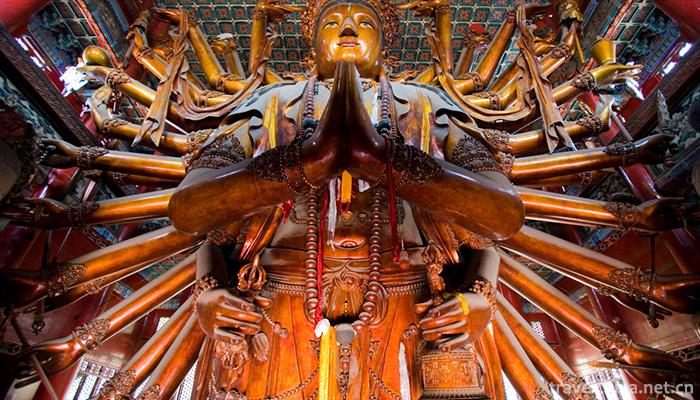
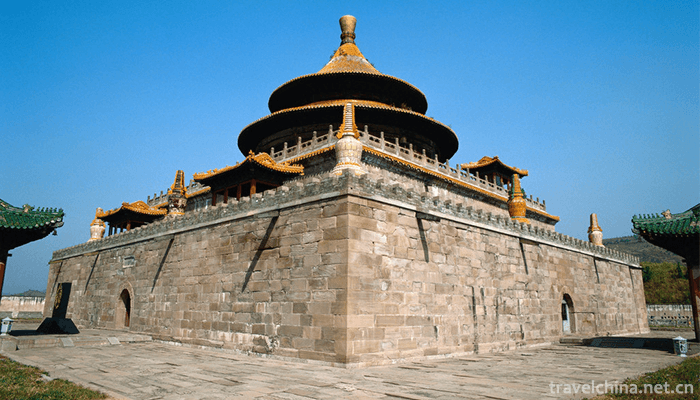
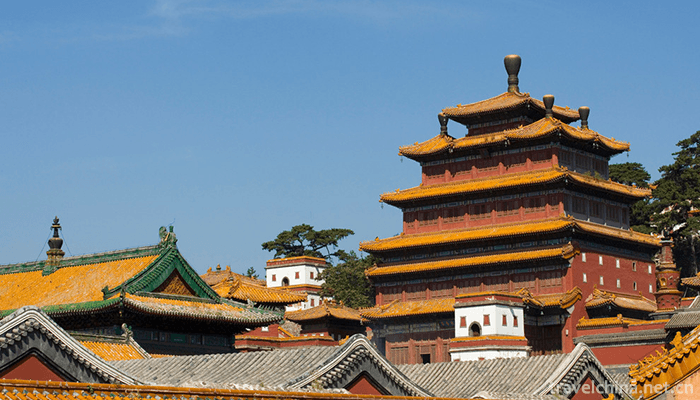
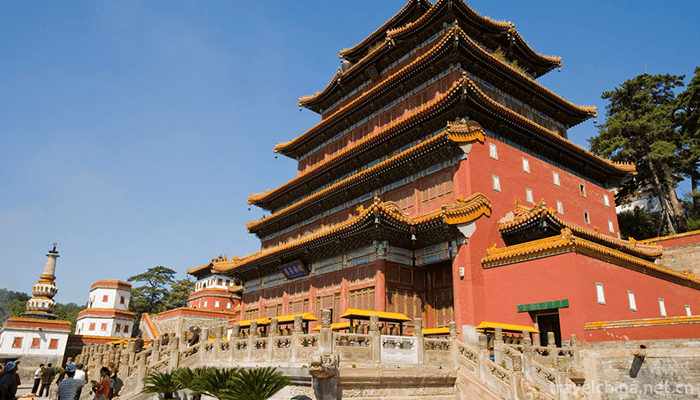
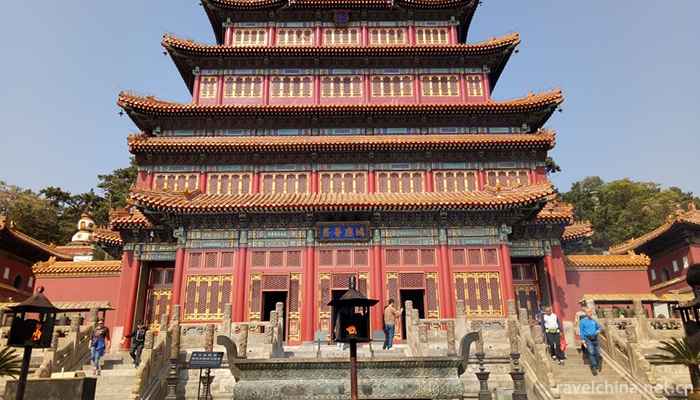

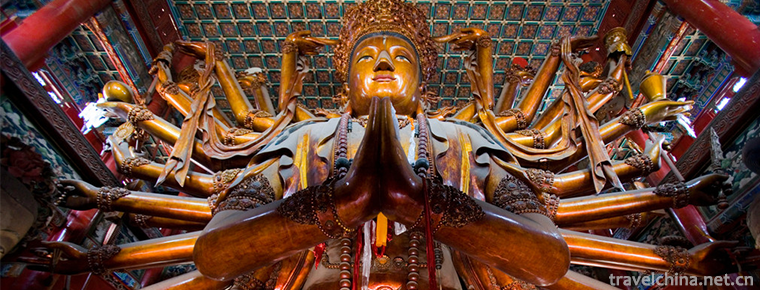
-
3.Crab congee
crab porridge is a snack in Macao. Macao is located at the junction of saltwater and fresh water, and the crab produced is delicious. Water crab porridge...
Time 2018-10-31 -
4.Yanoda Tropical Rainforest Scenic Area
Yanuoda Tropical Rainforest Scenic Area is the only tropical rainforest located at 18 degrees north latitude in China. It is the concentration of five tropical rainforests in Hainan Island
Time 2018-12-12 -
5.Burning Techniques of Linqing Gong Bricks
Linqing fired tribute brick is an ancient handicraft. Beginning in the early Ming Dynasty, Yongle's firing technology is the unique experience accumulated by the working people in Linqing of Shandong
Time 2019-05-13 -
6.Liu Sanjies Ballads
Liu Sanjie's folk songs, a local traditional folk literature in Yizhou City, Guangxi Zhuang Autonomous Region, are one of the national intangible cultural heritages.
Time 2019-05-13 -
7.Manufacturing Techniques of Fukushima Ship with Watertight Cabin
The manufacturing technology of watertight compartment Fukushima, the local traditional handicraft technology of Jiaocheng District in Jinjiang and Ningde City, Fujian Province, is one of the national
Time 2019-06-15 -
8.Wan Bang
Wan Bang is a rare local opera. It grows and distributes in Nanyang in southwestern Henan and its surrounding areas. In the early days, people called it Hao Bang, Lao Bang Zi, Nanyang Bang Zi, etc. Be
Time 2019-06-25 -
9.Uygur Drum Music
Uygur drumming music is a kind of national instrumental music widely circulated in the Uygur communities in the north and south of Tianshan Mountains, Xinjiang. Uygur drum music is an important kind o
Time 2019-06-26 -
10.acrobatics on a high flag pole
The banner is a kind of flag with different sizes. Zhongbian is a kind of flag with gorgeous decoration, honor features and competition strength. Zhongbian originated from the flagpole of the Royal Gu
Time 2019-08-03 -
11.Wenchuan earthquake epicenter site
The earthquake site, located in Yingxiu Town, Wenchuan, Sichuan Province, is open all day.
Time 2020-11-07 -
12.Deyang tertiary industry
In 2018, the annual real estate development investment in Deyang City was 14.98 billion yuan, an increase of 42.6% over the previous year. The construction area of commercial housing was 15.827 million square meters, an increase of 24.9%; the completed area
Time 2020-12-14